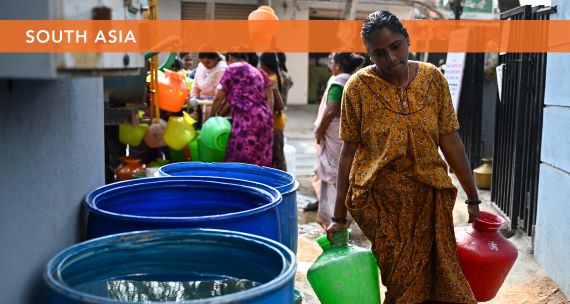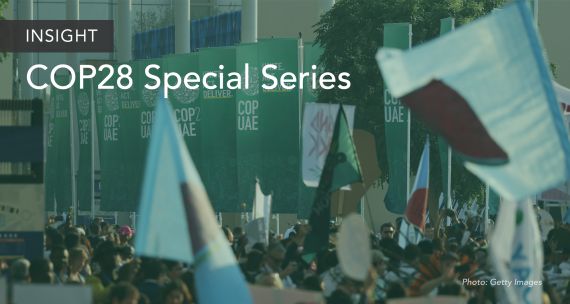The Takeaway
According to the World Meteorological Organization, July 2023 was the world’s hottest month on record, highlighting the severity of climate change. Since mid-July, Japan and South Korea have faced record heat waves surpassing 35 C that have profoundly impacted socially vulnerable groups like farmers, construction workers, platform workers (i.e. workers managed via online platforms and smart technologies), and elderly citizens.
In Brief
As blistering heat waves persist in Japan and South Korea, extreme heat-related problems have escalated. There are growing reports of individuals succumbing to heat-related illnesses during or shortly after work. The heat is especially hard on older workers, especially those in labour-intensive sectors. This trend underscores the acute vulnerability of workers in certain industries and age groups in the face of rising climate change threats.
For example, on August 1, warehouse employees at Coupang, an e-commerce company, staged a general strike across South Korea after a fellow worker collapsed from heat stroke. The workers’ demands include enhanced facilities to escape the debilitating heat and guaranteed respite rights, or the right to take breaks during extreme conditions. While the company’s management claims to support adequate rest for workers and the use of cooling apparatuses in warehouses, the labour union highlighted Coupang’s supposed failure to comply with the Ministry of Employment and Labor’s guideline for heat wave conditions, which recommends 10 to 15 minutes of rest per hour when the heat index surpasses 33 C.
In both Japan and South Korea, formal workplace guidelines are proving insufficient in safeguarding a growing group of workers — platform, or ‘gig,’ workers. The ‘gig’ label encompasses delivery workers, rideshare drivers, and independent contractors doing freelance work. Because these workers do not lay claim to a distinct work site and a definitive client base, they fall outside the scope of both countries’ heat illness prevention guidelines regarding regular breaks and restrictions on outdoor tasks during heat wave alerts issued by the Japanese and South Korean governments. The unique working conditions of this growing labour segment underscore a critical policy gap.
Implications
The burden of heat waves hits financially disadvantaged people the hardest. The high cost of electricity prevents low-income families from accessing cooling devices. For many of these low-income workers, the fear of economic insecurity from joblessness outweighs the fear of illness, or even death, by extreme heat.
Platform companies are also caught up in this heat-induced crisis as they have yet to implement systematic training and preventive measures against heat-related illnesses for their workers. Rather, the current business model incentivizes labourers to work more during heat waves because of weather-based surcharges. For instance, when the temperature surpasses 33 C, a surcharge of C$1.03 (1,000 won) per food delivery is added, leading to a higher volume of work during perilous heat conditions.
Meanwhile, labourers whose income is directly tied to the number of hours they work — such as construction workers — are also in a precarious situation. On construction sites, for example, workers often toil next to heated metal plates and reinforcements. The safety gear worn by many workers can also trap body heat, exacerbating the effects of the sweltering temperatures. The lack of income protection during mandated rest periods, combined with incentives like “heat surcharges,” drive these labourers into dire working conditions. This highlights a critical problem: monetary motivations pushing workers towards extreme situations, often at the cost of their own health and well-being.
What’s Next
-
Recognizing heat waves as disasters
In South Korea, legislative discussions are underway to classify heat waves as disasters. The Democratic Party of Korea, South Korea’s opposition party, is actively pushing for amendments to the Occupational Safety and Health Act. The changes aim to ensure workers take breaks when certain high-temperature thresholds are sustained. The party’s commitment to pass these amendments by the end of August underscores a growing recognition of heat wave hazards.
- Heat wave winners and losers
Rising temperatures are reshaping the economic landscape, creating winners and losers. Booming sectors like ice cream and air conditioning manufacturers and indoor-based businesses, such as shopping malls and movie theatres, are benefiting from a surge in consumption. However, there are wider and longer-term consequences of heat waves, such as threats to food security and production. In livestock farming, a labour-intensive sector, the scorching heat has not only led to a surge in animal mortality rates but also suppressed appetites among animals, causing reduced feed intake and decreased efficiency. Similarly, the production and harvesting of fruits and vegetables suffer due to the proliferation of heat-related plant diseases.
- Amplification of health threats
The health implications of heat waves include the rising frequency of “tropical nights,” when night-time temperatures stay above 25 C. As such conditions persist, fatigue from the intense heat — coupled with potential health risks — is likely to increase. In response, some municipal governments in South Korea plan to operate night-time heat wave shelters for residents aged 65 and above until September.
Produced by CAST’s Northeast Asia team: Dr. Scott Harrison (Senior Program Manager); Momo Sakudo (Analyst); Tae Yeon Eom (Analyst); and Sue Jeong (Analyst).




